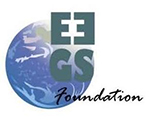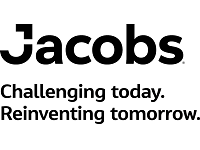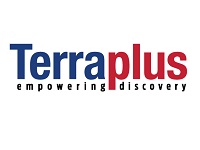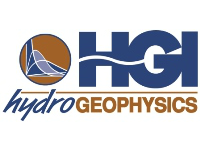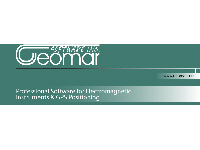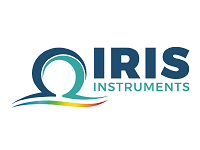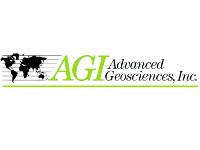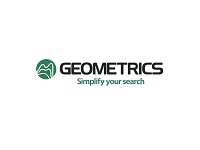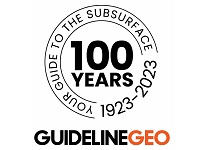GAINS Subject Matter Experts
 |
Kate McKinley
Kate McKinley is a Senior Geophysicist and Vice President at THG Geophysics, a full service geophysical firm dedicated to mapping the shallow subsurface and to providing utility location services. With over 20 years of experience in geophysics and business development, Kate still enjoys the everyday adventure of applying the principles of physics to imaging what lies below the surface. She has, gratefully, had the opportunity to provide these services to diverse projects in engineering, environmental, and archaeological disciplines. Kate enjoys sharing her experiences through teaching, helping to develop her trade through her activity in several professional organizations and helping her community by participating in several local, civic organizations.
|
 |
Darin Pendergraft
Darin started his career as a geophysicist at Engineering Science (now Parsons) in 1989. Then, after completing his M.S. in Geophysics at UC Riverside, he joined GEOVision in 1995, where he focused on near surface environmental and engineering projects. Darin received his CA state registration in 1996 (GP 1014) and stayed at GEOVision until 1997 when he was lured away by the high-tech industry. Darin then spent over 20 years working for various VC funded software startups, climbing up the management ladder with roles in product management, marketing, sales and operations. However, he never lost his love for geophysics, and rejoined GEOVision in 2024 where he is the Director of Business Development. He has recently passed the CA state registration exam (again!) and is excited to be back working in the industry.
|
|

|
Catherine Skokan, Ph.D.
Catherine Skokan graduated from the Colorado School of Mines with BS, MS, and PhD in Geophysical Engineering. She was the first woman to receive a Masters and a Ph.D. in any field at Mines. After a short stint with the U. S. Geologic Survey, she joined Mines as a faulty member first in Geophysics and later in Electrical Engineering. While at Mines, her research topics included geophysical studies in the areas of geothermal, volcanic, and groundwater issues. As well, she was active in organizing and working with students in the Humanitarian Engineering Program and helped to develop a minor in this area. In addition to her technical research, she worked as a PI or CoPI on twenty research projects in the arena of engineering education. She is active in professional societies for both geophysics and engineering education. She is the past president of the Engineering and Environmental Geophysics Society and has served on the boards for the Colorado Association of Science Teachers and the American Society of Engineering Education.
|
 |
Trever Ensele
Mr. Ensele is a seasoned geophysicist and geologist with 18 years of experience in the acquisition and analysis of geophysical, geological, and geotechnical data. His expertise spans a wide range of geophysical methods, including seismic, electrical resistivity, electromagnetic, magnetic, and GPR surveys, as well as GPS surveying and GIS software applications. Additionally, Mr. Ensele has managed mineral exploration programs, large scale geophysical surveys, diamond core drilling, trenching, and geotechnical sampling and analysis programs.
|
 |
Lia Martinez
Lia Martinez is a geophysicist specializing in borehole geophysical logging methods and working for Mount Sopris Instruments for almost 13 years. Previously based in Denver, USA, she now lives in Cusco, Peru. She has broad experience teaching wireline data collection and processing to geoscientists in mining exploration, geotech, environmental, and groundwater industries in over 30 countries. Lia is excited about the many ways borehole geophysics can be used to support and expand our knowledge of the subsurface, especially when related to novel applications.
|
 |
Richard F. Graham
Richard F. Graham is a Licensed Professional Geologist with more than 25 years of experience in the marine geophysical survey, geophysical exploration and hydrographic survey industry. He has planned, performed, interpreted and reported on numerous high-resolution, multi-faceted geophysical surveys conducted across deep-water, shallow-water, near-shore marine, lacustrine and riverine environments worldwide. Richard holds a Bachelor of Science in Geology from The Ohio State University and a Master of Science in Geology from the University of Nebraska. He has broad experience with an array of scientific instrumentation in both field and laboratory settings. He is the author of several Scientific Publications. Richard resides in Washington State where he is the owner of The Sirius Group Geo Consulting.
|
 |
Mia Painter, PG
Mia Painter has been with Schnabel Engineering in the Philadelphia-area office for almost 25 years, starting there out of graduate school with a nice mix of geophysical and geotechnical field investigations throughout the early part of her career. Mia is Schnabel’s Geophysical Services Practice Lead and she specializes in geophysical and geological investigation for all types of civil engineering projects, with a particular area of interest in karst.
|
 |
Jacob Sheehan
Jacob Sheehan has 22 years of experience in engineering and environmental geophysics. As a consultant, he has extensive experience conducting geophysical surveys for environmental and engineering applications. His specialties include using seismic, electrical, electromagnetic and magnetic methods for a wide range of applications including, bedrock mapping, kart evaluation, groundwater mapping for resource and contamination studies, seismic site class determination, dam and levee assessment, and transportation planning.
|
 |
Judy Robinson, Ph.D.
Judy Robinson is a computational scientist with field and numerical modeling experience in geophysical methods, specializing in electrical resistivity tomography (ERT). Since joining PNNL in 2018, her work has focused on 1) jointly inverting using flow and transport models with ERT to determine the feasibility of field electrical imaging and 2) characterizing stratigraphic structure. She also has expertise in analyzing complex resistivity data and is working towards a joint physical and geochemical interpretation using field and laboratory datasets. Judy has a B.S. in Civil Engineering from NJIT, a M.S.E. in Environmental Engineering from Johns Hopkins University and a Ph.D. in Environmental Science from Rutgers University-Newark.
|
 |
James St. Clair, Ph.D.
James St. Clair is a geophysicist specializing in seismic methods. He has been with PNNL since 2020 and supports a variety of projects ranging from explosion monitoring using Distributed Acoustic Sensing to seismic characterization of the near surface. James has a B.S. in Geology from the University of Montana, a B.S. in Field Geosciences from the Universität Potsdam, and a Ph.D. in Geophysics from the University of Wyoming.
|
 |
Esther Babcock, Ph.D.
Esther Babcock received her M.Sc. in Environmental Science from the University of Arizona and her Ph.D. in Geophysics from Boise State University. Her geophysical experience focuses on near-surface investigations for geotechnical and environmental applications, and specifically remote investigations under Arctic conditions. Dr. Babcock’s geophysical field experience includes Africa, the Canadian and Alaskan Arctic, and Antarctica. She currently owns and operates Logic Geophysics & Analytics LLC, based in Anchorage, Alaska, and conducts geophysical field work across the state, from the North Slope to the Aleutians. Her specialties include ground-penetrating radar and mapping permafrost.
|
 |
Dale Werkema, Ph.D.
Dale Werkema is a research geophysicist serving the US EPA Office of Research and Development since 2002. He performs basic and applied research on the geophysical response to contamination, remediation, and conceptual site model development. Dale also provides technical support and guidance to the US EPA, State, Local, and Tribal Governments. He received a B.S. in Geology from Wayne State University, a M.S. in Hydrogeology and Geophysics, and a Ph.D. in Geophysics from Western Michigan University.
|
 |
Phil Sirles
Phil has worked on dams and levees both internationally and across the U.S. since 1986. With nearly 400 projects under his belt, applying multiple geophysical methods, he has utilized both simple approaches and very complex field investigations to meet the clients needs; which approach typically involves the safety of the structure. Projects have ranged from small to very large embankment and concrete dams. Along with the geophysical investigation aspect of the GAINS training course, Phil will share what he’s learned and what owners' risk-based decisions require from the perspective of why use geophysics?
|
 |
Scott Ikard, Ph.D., P.E., P.G.
Scott is a Hydrologist at the U.S. Geological Survey's Oklahoma-Texas Water Science Center, in Austin, Texas. He is a licensed Professional Engineer and Professional Geologist, holds a Ph.D. in Geophysical Engineering from the Colorado School of Mines, an M.E. in Geological Engineering from the Colorado School of Mines, and a B.S. in Geology from James Madison University. Scott currently serves as Project Chief on applied research studies in hydrogeophysics.
|
 |
Ryan North, Ph.D., P.Gp., P.G.
Ryan North is a geophysicist with over two decades of expertise in near surface geophysics. He has worked for US Army Corps of Engineers (USACE) Engineer Research and Development Center (ERDC), Olson Engineering, and ISC Geoscience. He is licensed as a geologist, geoscientist, and geophysicist in multiple states and territories. He has spent years
mixing near-surface geophysics and non-destructive testing and engineering (NDT&E).
|
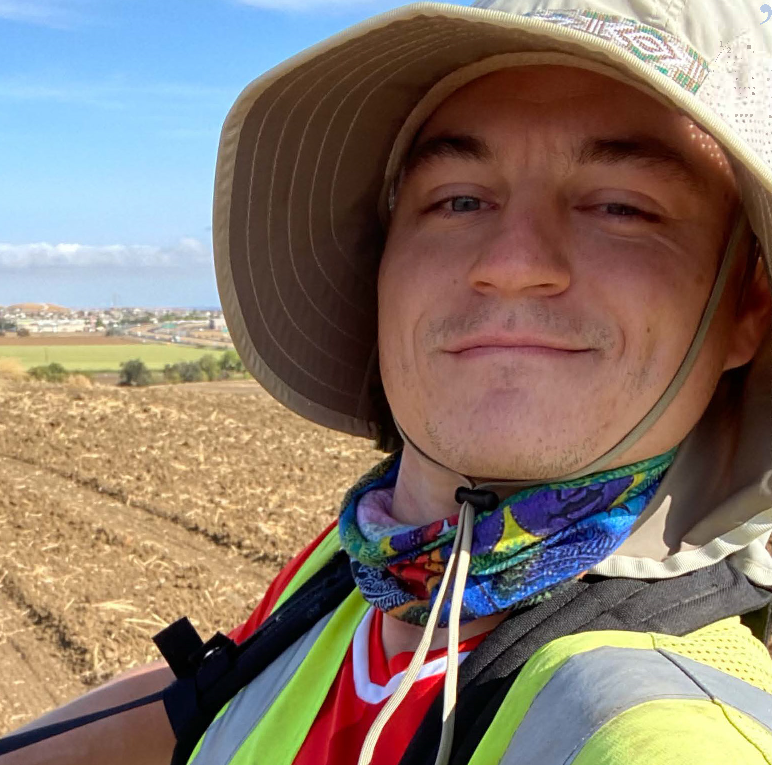 |
J. Sage Wagner III, P.Gp., P.G.
Sage Wagner is a Professional Geophysicist and Department Manager at Terracon Consultants Inc. where he co-leads the nation's largest team of near-surface geophysicists. Originally from the East Coast and now based in the West Coast, he holds multiple degrees and licensures in both Geology and Geophysics. Since beginning his career in 2014, Sage has developed a strong interest in engineering geology, with a focus on geologic and geohazard mapping. He is committed to leveraging technology to deliver data-driven solutions for both the built and natural environments.
|
 |
Karen Rae Christopherson
Ms. Christopherson is an experienced geophysicist who has been working for more than 40 years with magnetotellurics (MT) and electromagnetics (EM) for geothermal, hydrocarbon, water, and mineral resources exploration in many worldwide locations. She attended the Colorado School of Mines and University of Colorado, receiving a B.S. in Geology and an M.S. in Geophysics. In the late 1980s, after working for the U.S. Geological Survey and the BP America Technology Center, Ms. Christopherson founded her own firm, Chinook Geoconsulting, based in Evergreen, CO, which focuses primarily on the acquisition and interpretation of resistivity data.
|
 |
Koya Suto
Koya Suto was born in Japan and holds a B.E. and M.E. in Exploration Geophysics from Mining College, Akita University, in Japan with further studies at the University of Adelaide, Australia. After 25 years in the petroleum industry, Koya started Terra Australis Geophysica in 2003 to service the civil engineering and environmental industries using surface-wave seismic methods such as the multi-channel analysis of surface waves (MASW) method. He translated “The Microtremor Survey Method” by Prof Okada (SEG, 2003) and “Application Manual of Geophysical Methods for Engineering and Environmental Problems” (EAGE, 2014). He served as the Federal Executive of the ASEG for over 20 years and served as ASEG President from 2013 to 2014; he is now an Honorary Member of ASEG. In 2015, he was awarded the Harold Mooney Award of SEG Near-Surface Technical Section. In 2017, he was selected as the SEG Honorary Lecturer for Pacific South where he presented lectures in nine countries.
|
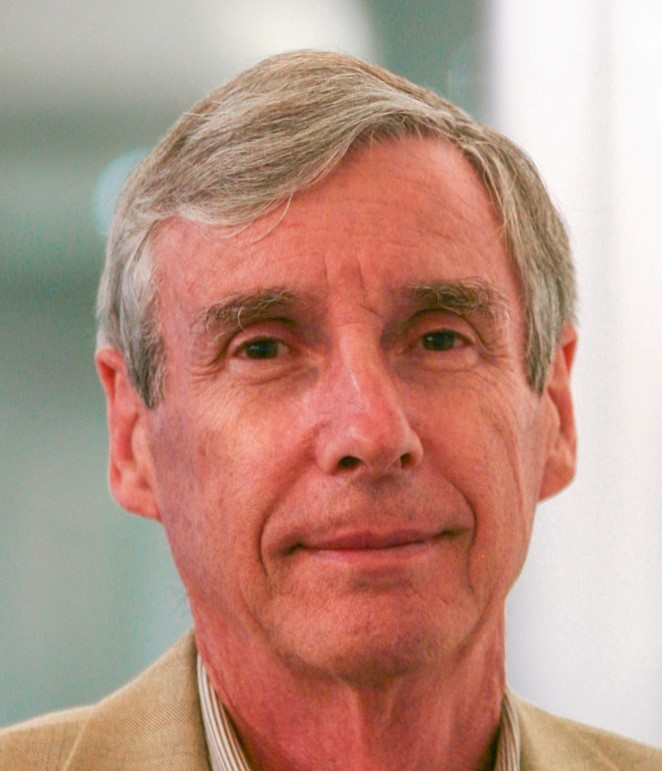 |
Paul Somerville, Ph.D.
Paul is Principal Seismologist for AECOM in Los Angeles, CA, where he does research and development on earthquake source and strong ground motion models for seismic hazard analysis. He has applied these skills in developing design ground motions for major buildings, bridges, dams, and power generation facilities in many countries, including Australia, New Zealand, the United States, and Japan. Paul was President of the Australian Earthquake Engineering Society from 2014 to 2016 and was involved in updating the 2019 seismic guidelines for the ANCOLD (Australian National Committee on Large Dams).
|
|

